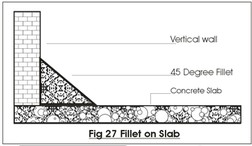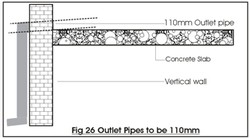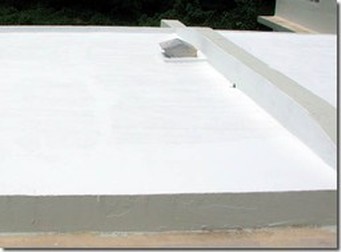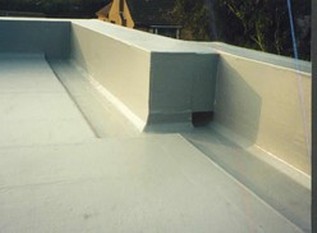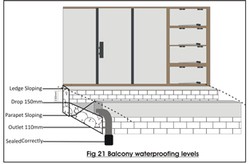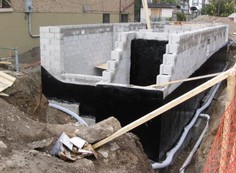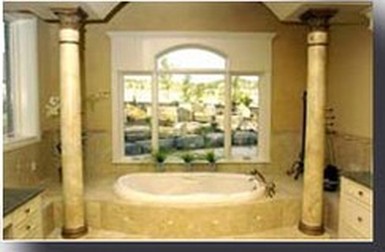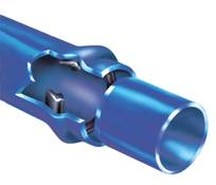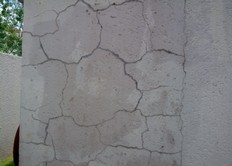WATERPROOFING AFRICA, We Reign When It Pours
Main menu:
ADVICE FOR BUILDERS & ARCHITECTS WHO ARE BUILDING OR UPGRADING PROPERTIES
The following points will avoid waterproofing issues in future and alleviate additional expenses |
|
This fillet curve of cement, will reduce the perishing of the waterproofing material at the corner junctions. |
|
Allow a 110mm outlet pipe to be installed through walls etc. |
|
It is highly recommended that the minimum of a 110mm outlet pipe |
|
Ensure concrete slopes / falls are correct |
|
When laying a screed, make sure the fall is correct flowing toward the outlet pipes. Failure to do this will create ponding which will decrease the life expectancy of waterproofing. Furthermore ponding on patios will eventually discolour the tiles |
|
Plaster parapet walls tops at an angle inward away from view |
|
By sloping parapet walls inward at an angle away from the eye allows the rain water to flow backward toward to roof or patio. This avoids dust and rain water streaking down walls |
|
Allow a step @ balcony patio border to avoid dust streaking down |
|
Build a step around the patio edge to barricade the water. This will ensure the water does not flow down the sides of walls, thus again avoiding streaking |
|
Ensure 150mm drop from sliding door to patio floor avoids flooding |
|
Ensure there is enough of a drop from the patio door to the floor level (min 150mm). If this is not done, one will experience continual flooding under the doors damaging carpets/wooden floors etc. |
|
Damp proofing of external walls |
|
If the exterior soil level is higher than the interior ground level, it is essential that a waterproofing system is to be installed. This application is commonly known as tanking and the waterproofing should protrude 100mm above the ground level. If large amount of drainage water flows toward the wall, a drainage system should be installed (GEO drainage) |
|
Waterproof shower walls and floors |
|
Should a shower be waterproofed? YES
|
|
Seal outlet pipes correctly within concealed areas |
|
Make sure that outlet pipes in walls are sealed or glued correctly. Failure to do this will result in columns and concrete pillars becoming saturated with water. This damp usually spreads at an angle downward through the brickwork |
|
Cracks in plasterwork should be waterproofed immediately |
|
Once there is a visible crack in plasterwork immediate waterproofing action must be taken. If cracks are left exposed to the elements, rain water will seep into the plaster, allowing the plastered to secrete a white powdery substance. This substance is the lime in the cement which bleeds out of the plaster work. Often the case, plaster will need replacing |
|

© 1996-2009 Waterproofing Africa All Rights Reserved
